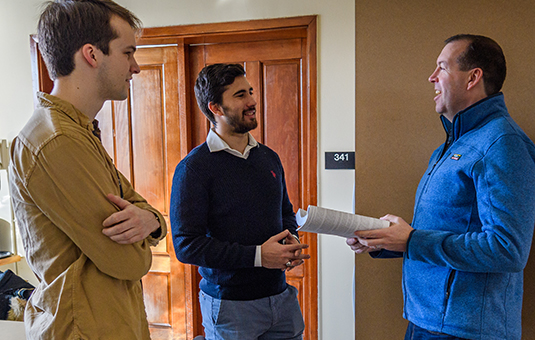Computer Science
Predicting the folding pathway of engrailed homeodomain with a probabilistic roadmap enhanced reaction-path algorithm
Document Type
Article
Abstract
To predict a protein-folding pathway, we present an alternative to the time-consuming dynamic simulation of atomistic models. We replace the actual dynamic simulation with variational optimization of a reaction path connecting known initial and final protein conformations in such a way as to maximize an estimate of the reactive flux or minimize the mean first passage time at a given temperature, referred to as MaxFlux. We solve the MaxFlux global optimization problem with an efficient graph-theoretic approach, the probabilistic roadmap method (PRM). We employed CHARMM19 and the EEF1 implicit solvation model to describe the protein solution. The effectiveness of our MaxFlux-PRM is demonstrated in our promising simulation results on the folding pathway of the engrailed homeodomain. Our MaxFlux-PRM approach provides the direct evidence to support that the previously reported intermediate state is a genuine on-pathway intermediate, and the demand of CPU power is moderate. © 2008 by the Biophysical Society.
Publication Title
Biophysical Journal
Publication Date
2008
Volume
94
Issue
5
First Page
1622
Last Page
1629
ISSN
0006-3495
DOI
10.1529/biophysj.107.119214
Keywords
algorithms, computational biology, computer simulation, protein folding, proteins chemistry, forecasting, models, statistical, probability, protein binding, protein conformation, solutions chemistry, temperature
Repository Citation
Li, Da Wei; Yang, Haijun; Han, Li; and Huo, Shuanghong, "Predicting the folding pathway of engrailed homeodomain with a probabilistic roadmap enhanced reaction-path algorithm" (2008). Computer Science. 196.
https://commons.clarku.edu/faculty_computer_sciences/196
APA Citation
Li, D. W., Yang, H., Han, L., & Huo, S. (2008). Predicting the folding pathway of engrailed homeodomain with a probabilistic roadmap enhanced reaction-path algorithm. Biophysical journal, 94(5), 1622-1629.



